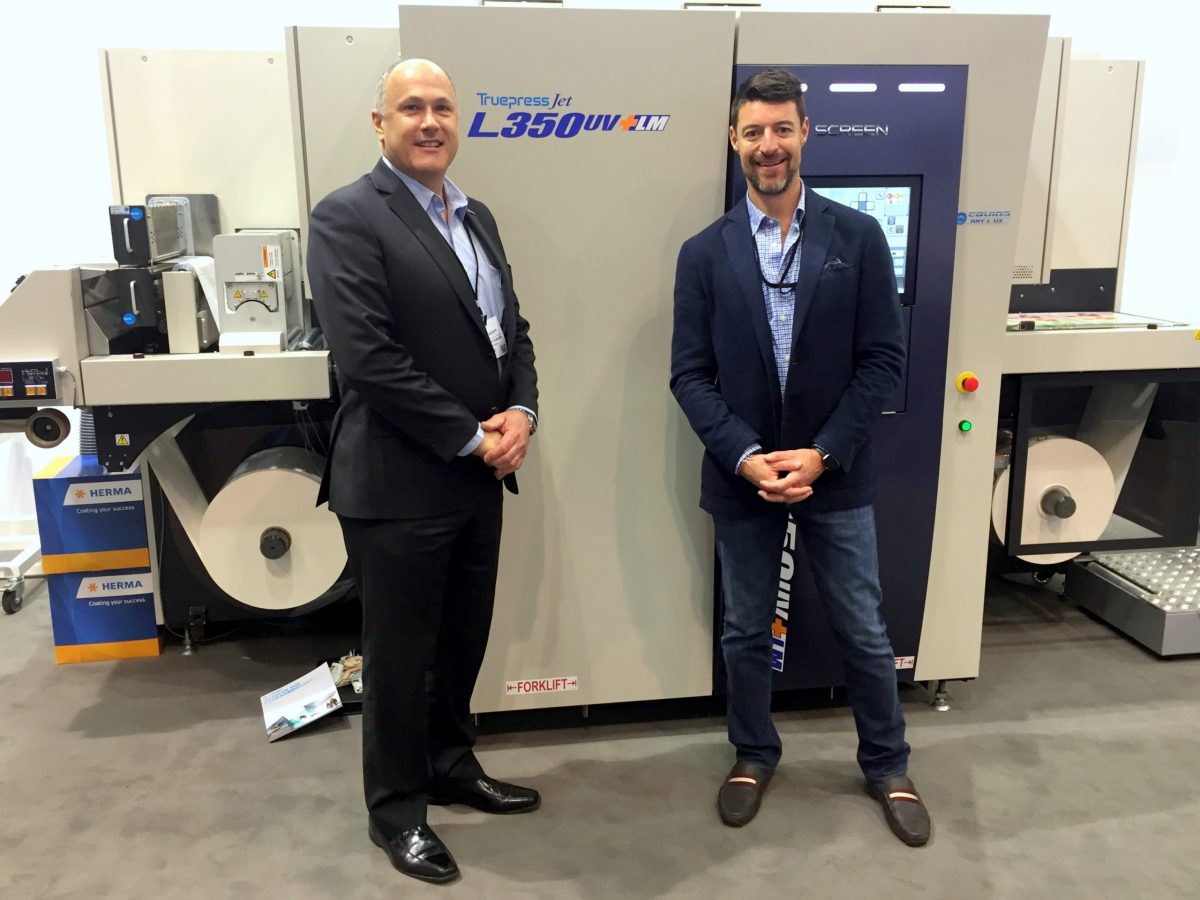Screen has sold two of its newly-launched L350UV+ label presses at Labelexpo, and says the stand at the show was well attended by New Zealand label converters.
The digital inkjet label press previously reached speeds of 50 metres per minute, but Screen says the new models L350UV+ can hit 60 metres per minute.
Jet Technologies is the distributor for Screen, and managing director Jack Malki says the company found great value in Label Expo this year.
“Jet Technologies will be bringing to market the Screen L350UV+LM – the low migration ink technology will allow our local label partners to offer this global compliance food packaging solution.”
Peter Scott, managing director, Screen Australia says, “The new low-migration ink allows them to print on flexible packaging, but the current models and inksets are also suitable for food labels, provided they are printed in conjunction with a functional barrier.
“We picked up two orders, from from the UK and one from South Africa. Springfield in the UK just bought its fourth L350, with the latest including the low migration inks.
“A good number of New Zealand label printers attended. It is always well attended by Australian and New Zealand label convertors, and we are always happy to go because of that.”
Made with the food packaging industry in mind, the L350UV+LM features low migration inks, which help comply with Australian food packaging industry standards requiring minimal contact between inks, food and beverages. The L350UV+ is offered for applications outside of food and beverage packaging, where low-migration inks are not needed.
Both presses feature the new nitrogen purge mechanism for accelerating the curing of UV inks; Screen says this helps the press achieve an extra 10 metres per minute in productivity.
For both presses, the transfer section can be optionally equipped with a chill roller for cooling thin substrates that are particularly susceptible to the heat generated by its UV lamp. According to Screen, the roller mechanism allows these substrates to be transferred and printed reliably, while labels required for the wrappers used on PET bottles can now be digitally printed efficiently.
Support for orange ink has also been added to the offering, which already included CMYK plus white.
Malki says, “It is an amazing expo that is always well supported. We hosted a dinner for our clients with over 60 in attendance.
“One of the major trends continues to be the drive towards automation at every step of the production process. This year our Pulse Puretone system has been well received, giving printers the ability to produce the correct colour with certainty and simplicity on the first attempt. There is also the drive towards greater food packaging compliance, and in this regard the FPC version of Puretone is the one that seems to be getting the most traction.


